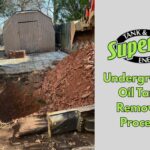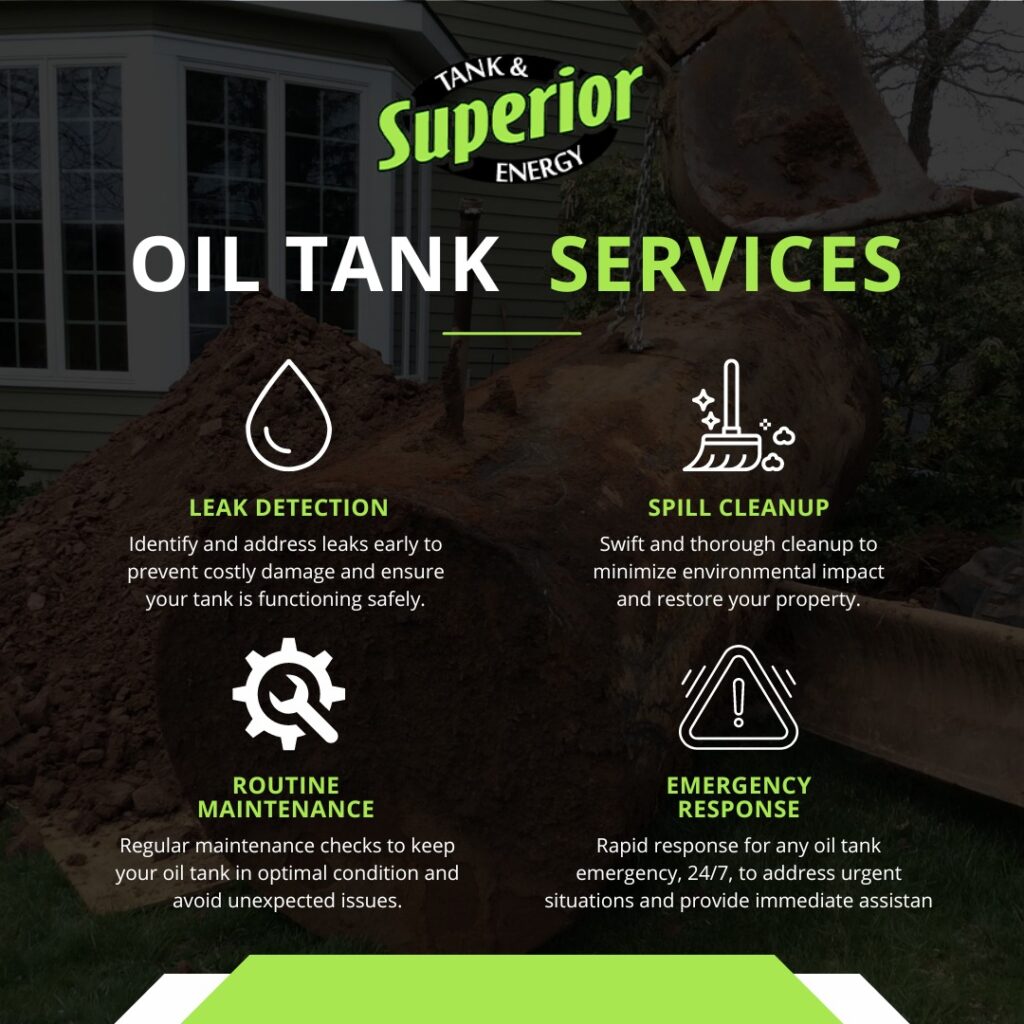
- Posted by: Superior
- 0 Comments
How Deep Should the Base of My Oil Tank Be?
How Deep Should the Base of My Oil Tank Be?
When it’s time to replace your oil tank, several important details must be considered for different types of installations. For example, to install your heating oil tank, you need to know what size tank is required to meet your home heating needs, the best tank construction material for your application, the location of the fuel lines, local regulations that impact installation, costs associated with the installation, and any safety precautions necessary to do the job without damage or injury. But equally as important as all those considerations is the platform the oil tank will be placed on. So one question you should ask is, “How deep should the base of my oil tank be?”
Superior Tank & Energy provides oil tank replacement in NJ and surrounding areas. Our technicians are highly-trained experts at different types of oil tank installations who can assess your home’s needs and determine the best thickness for the base of your oil tank. To understand how deep the base of your oil tank should be, it’s essential to understand the purpose of an oil tank base.
What is the Purpose of the Heating Oil Tank Base?
The platform underneath your oil tank serves several vital functions, so it must be designed to suit your oil tank and comply with all local and National Fire Prevention Association (NFPA) codes when you install an oil tank. Some of those functions include:
- Stability — The primary purpose of your oil tank platform is to provide ground tanks with stability. The platform gives the tank a stable surface, ensuring it remains upright and doesn’t tip over.
- Protection — The platform also acts as a barrier between the tank and the ground and helps to protect it from corrosion, punctures, or other types of damage that could compromise the integrity of the tank.
- Spill containment — Another reason bases are used in oil tank installation is to help contain any oil leaks or spills. Any leaks or spills will be more noticeable on the platform than if the oil was seeping into the ground, which can help minimize the environmental impact of a leak or spill.
What Factors Impact How Thick an Oil Tank Base Should Be?
In most instances, an outdoor oil tank can be placed on top of a pre-cast concrete pad that is 24” wide x 36” long x 2” deep. The ground beneath the pad is cleared and leveled. Then a layer of ¾” stone is spread on the ground, and the oil tank pad is placed on top of the stone.
But some factors determine the exact type of base construction that would be best for your oil tank, which will also dictate how deep the base of your oil tank should be. Some of those factors we consider include:
- Soil type — Different areas have different types of soil that can impact the kind of platform that is best for an oil tank. A substantial base is required if the soil the tank is placed on is loose, unstable, or prone to erosion.
- Tank size — The size and weight of oil tanks can vary. But, on average, a full 300-gallon residential oil tank can weigh over 2,000 lbs, depending on the materials used to construct it. Larger commercial tanks can weigh significantly more. The size and weight of your tank will help determine the type of platform needed to support the load.
- Climate — Areas with harsher climates may require a wider base to help prevent the tank from tipping over. Sometimes, homeowners might be better off with underground oil tanks that will not be exposed to harsh weather conditions.
- Local building codes — Local building codes can set precise regulations and requirements for how deep the base of an oil tank should be. Not adhering to these regulations and requirements can result in a tank failing inspection or the homeowner receiving fines. It’s essential to consult with local authorities to ensure compliance or work with a company like Superior Tank & Energy that is already familiar with local codes and performs installations that meet or exceed them.
- Environmental considerations — Tanks placed in environmentally sensitive areas may require special precautions to prevent soil contamination and adhere to local codes. If you live in an area subject to strict environmental regulations, liners or other protective measures may need to be used in addition to the oil tank platform.
Several different types of oil tank bases are commonly used. They include pouring concrete, pre-cast concrete slabs, paving slabs, stonework, or pre-cast concrete slabs. In most cases, depending on the size, weight, and other factors listed above, the thickness of the base will be between 2” and 4”.
What About Other Types of Tank Installations?
These are some of the factors for oil tank bases that come into play when installing an outdoor aboveground oil tank. However, different considerations come into play when installing underground, indoor oil tanks, or oil tank removals, such as how deep the bottom of the tank must go for underground tanks or where supply lines need to be located to keep them away from heat sources, electrical wiring, or other combustible materials.
Call Us For a Free Estimate On Your Oil Tank Installation
Tank installation and removal is a complex job requiring specialized tools, equipment, and training to complete safely and ensure that all installations and removals meet local codes and regulations. When installing a heating oil tank, it’s best to call in a professional to do the job. Superior Tank & Energy offers oil tank removal in Lehigh County, PA, and the surrounding areas. In addition to removing your old tank and determining exactly how deep the base of your new oil tank should be for a tank installation, we offer services for tank repair and emergency tank service. Call us today for a free estimate!






Recent Comments